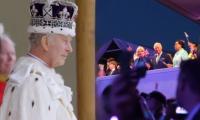ISLAMABAD: Pakistan and the IMF have inched closer towards inviting the Fund’s mission next month for evolving consensus on staff level agreement as Islamabad is willing to replace from ‘managed’ exchange rate to market based flexible exchange rate in order to secure multibillion bailout package.
With placement of market based flexible exchange rate, there will be zero net intervention from the central bank into currency market by end of every quarter as this policy will pave the way for further adjustment of rupee against dollar for achieving equilibrium in the exchange rate.
The defining of finalised parameters for placing market based flexible exchange rate will come under discussion when the IMF mission is likely to visit Pakistan after mid-April 2019. The newly appointed IMF’s mission chief Ernesto Ramirez Rigo is scheduled to visit Pakistan on March 26 and 27 so the currency market remains jittery on the expectation that the market based flexible exchange rate will result into putting pressure on rupee against dollar. “There is no range of exchange rate as the real effective exchange rate (REER) model runs by us shows that the rupee is overvalued by Rs2.80 against dollar and this kind of adjustment could be made,” said the sources.
Minister for Finance Asad Umar is scheduled to visit Washington from April 10 to 12 for attending annual spring meeting of IMF/WB and on the sidelines, the IMF mission details will be worked out with the Fund management.
However, independent economists argued that the market was not too big and free float of exchange rate could rife speculations. According to initial assessment with the placement of market based flexible exchange rate, the rupee might witness some slide against US dollar hovering around Rs150 against US dollar in coming weeks and months. However, the State Bank of Pakistan is arguing that the central bank might continue intervening in day-to-day affairs of the market but there might be certain period when there would be zero net intervention on the basis of end of every quarter because Pakistan’s currency market is very volatile and complete free float might result into rise in speculations.
One top official who is dealing with this issue told The News on Monday that Pakistan and the IMF assessed that Pakistani rupee was still overvalued in the range of 2 to 3 percent keeping in view the real effective exchange rate (REER) so it could not be termed the range of disequilibrium. They said that there could be two objectives of the SBP -- one is to protect the currency market and second is to increase the foreign currency reserves. When Pakistan possessed sufficient reserves, it protected its market but now the reserves were on decline so the currency could not be protected for longer period. The government thinks that the effective management of exchange rate has provided dividends as the current account deficit decreased from over $1.2 billion in December 2018 to over $800 million in January 2019 and now it stood at $356 million in February 2019.
When the official was reminded that the foreign currency reserves were still depleting as it nosedived by $93 million despite massive decline in current account deficit, the official said that the heavy repayments were due so it was causing pressures on foreign exchange reserves.
The IMF in its initial assessment gave prescription that Pakistan is facing an increasingly difficult macroeconomic situation with a large balance of payment gap, a fiscal deficit and growing losses in state owned enterprises (SOEs).
Defence of an overvalued exchange rate, loose fiscal policy and accommodative monetary policy are among the major root causes of these challenges. Talking to reporters, renowned economist Dr Hafiz A Pasha said on Monday that free float of exchange rate could rise speculations so Pakistan should move towards bringing real effective exchange rate, which shows that the rupee was still overvalued in the range of up to 3 percent. He deplored at the capacity of the Ministry of Finance and stated that the current account deficit decreased which was welcome sign but the ability to generate dollar inflows from traditional partners also eroded badly and the government must not show laxity on external front at all.
This order marks a significant milestone in the collaborative efforts of the Privatisation Commission , Finance...
It may be noted that the interior minister had recently suspended passport officials in light of increasing complaints...
During the month of March, the private sector was allowed to import 6.91 million metric tonnes of wheat worth Rs57.192...
It is estimated that private medical institutions have collected around Rs75 to 80 billion rupees annually from...
A transgender person and a policeman can be seen in this still taken from a video.— X@intofawadkhan5/FileGUJRAT:...







